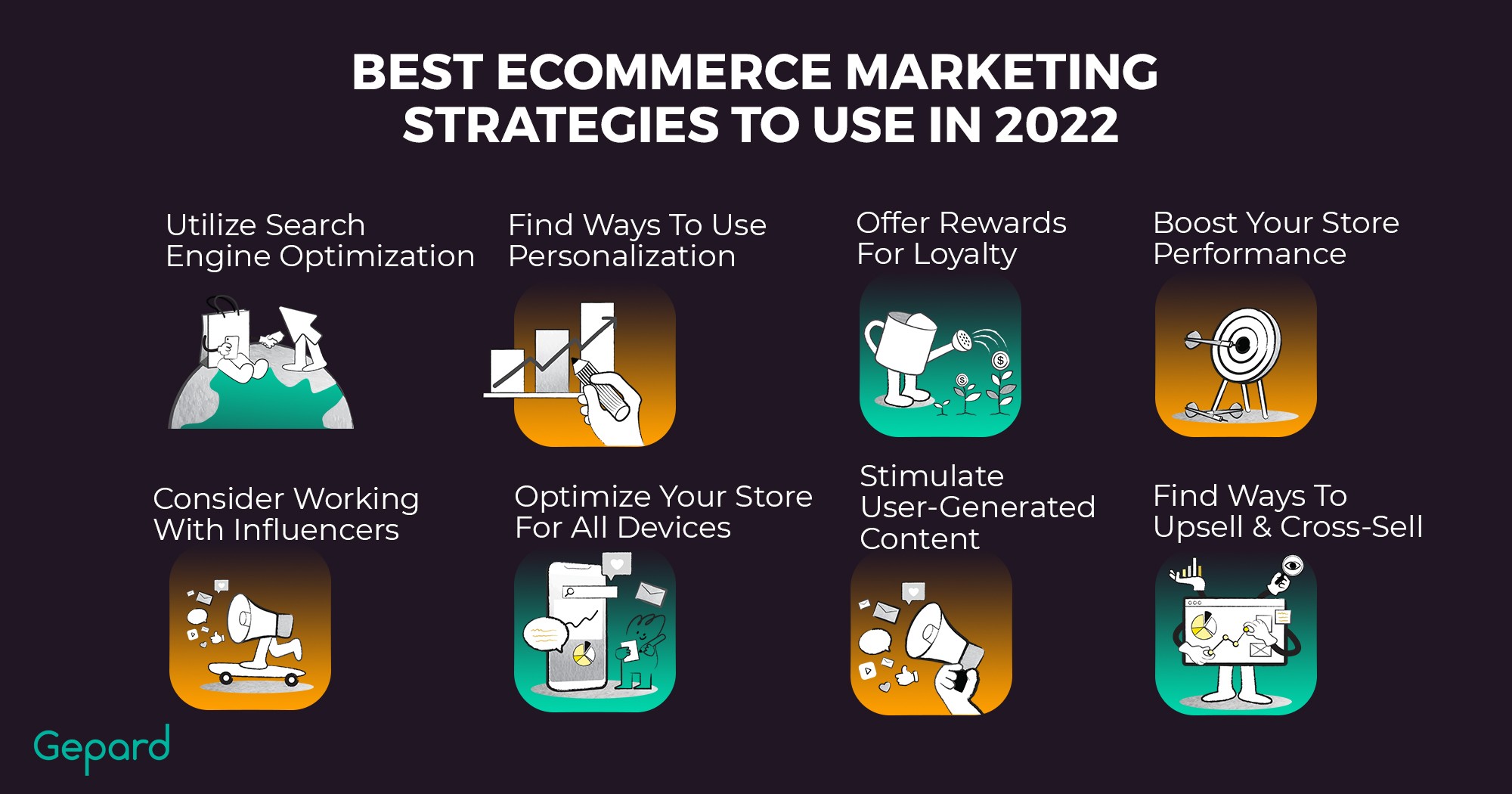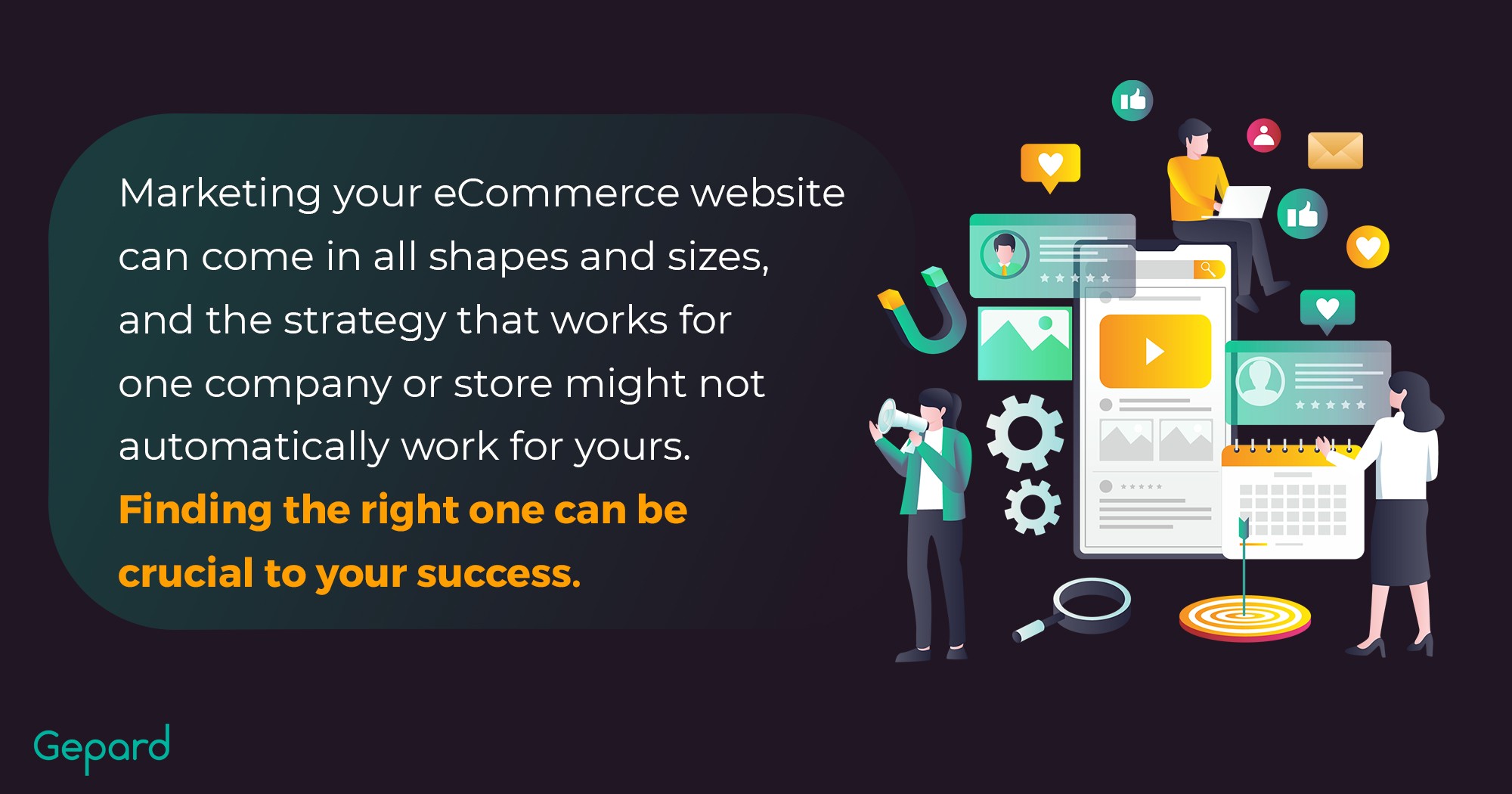8 eCommerce Marketing Strategy Recommendations For 2024
eCommerce has grown to be an incredibly large industry and has fundamentally changed how people buy and sell things, in a very short amount of time. Today, there are thousands and thousands of online stores and eCommerce websites that let you buy just about anything under the sun.
With such an explosion of popularity in the market, there is a lot of competition when it comes to selling items. Every company wants to fine-tune and perfect its eCommerce optimization to ensure it can be as successful as possible. A big part of this is using the right marketing strategy to attract new customers.
Marketing your eCommerce website can come in all shapes and sizes, and the strategy that works for one company or store might not automatically work for yours. Finding the right one can be crucial to your success, so it is a good idea to become familiar with your options and learn what they are all about.
With that in mind, let’s go over some of the best eCommerce marketing strategies to use in 2024.
1. Utilize SEO
SEO (search engine optimization) continues to be one of the best ways to affordably and organically attract people to your store or site. Collaborating with a TFM Digital ecommerce team can supercharge your SEO efforts, delivering tailored strategies that boost organic traffic and enhance your online store’s visibility in competitive markets. It can be used for blogs, eCommerce stores, online portfolios, and just about every other kind of site.
This strategy is all about helping your site rank higher in search engine results. The higher you are in the results, the more people will notice your site. Few people ever go three or four pages into Google results for things, and many people click on one of the first few options, so you need to make sure you are there.
There are many things you can do to improve your SEO. One of the best is to perform keyword research and learn the terms and keywords that your target audience is searching for online. If your content naturally includes words or phrases that people search for, it should help your rank. Getting backlinks from high-quality sites, blogs, or social media posts is also a good way to rank highly.
Also, with algorithms becoming better and better, you need to ensure the content you provide is valuable, too. The site structure you have and your overall experience can also influence where you end up in search engine results.
While visits to your site or ranking in search engines don’t automatically mean you will be successful and get more sales, it gives you a great chance. SEO can be a difficult strategy that is always changing, and results won’t show immediately, but with enough knowledge and hard work, it can be a great way to get your products in front of those who are interested in them.

2. Consider Working With Influencers
Another great marketing strategy to help you grow your business and attract more customers is working with influencers. The influencer marketing industry is growing rapidly and more and more companies are seeing it as a great way to get their products in front of the right people.
Working with influencers gives you a chance to reach new audiences, and help an influencer make sales for you, while also increasing the awareness of your brand. Having these Internet celebrities act as ambassadors for your brand can have a major positive impact on sales, or at least interest in your company.
Also, it is important to be aware that there are influencers for all tastes. You can go after the mega influencers with millions of followers, but they will often cost you quite a bit. Working with micro-influencers can still have great results, and has the ability to save you money.
Many brands also use tools like Uniqode’s QR code generator to create trackable, personalized codes influencers can share with their followers—perfect for bridging the gap between content and conversion.
However, no matter what size of influencer you work with, make sure they fit well with what you are trying to sell. For example, if you are selling clothing, working with a fashion influencer is often a better idea than a fitness or gardening celebrity. If the fans of the influencer you work with aren’t in your target market, the partnership likely won’t be as fruitful as it could have been.
3. Find Ways To Use Personalization
An increasingly popular tactic to drive more sales and help your business thrive is using personalization. Customers today are no longer happy simply being another number in a long list of customers, and want to feel truly valued by the companies they work with and purchase from.
A great way to show customers you care and appreciate them as individuals is to use personalization when you can. Using data, you can offer personalized experiences and recommendations suited exactly for an individual, based on past decisions or behavior. This makes them feel as if you are fine-tuning their experience, and can go a long way when it comes to improving sales. In addition to using past history, you can also use customer names and locations to personalize the experience or your correspondence with them.
4. Optimize Your Store For All Devices
In the past, most Internet searching and shopping took place on computers. However, today, that is changing. more Internet traffic is actually coming from mobile devices like phones and tablets, and this shows no signs of slowing down anytime soon. As a result, you need to ensure your site is optimized and can look great on every device. If not, you might find it difficult to achieve the kind of success you want.
This is important to consider when first creating your site and store, but is also something to keep in mind when making posts, adding photos, and things like that. If your mobile experience is clunky or simply not as good as what you offer on a desktop, it could drive a large portion of potential customers away.
5. Offer Rewards For Loyalty
Another great way to attract more interest and buyers to your store is to offer some type of loyalty or rewards program. This can be a phenomenal way to retain customers, and show them that you really appreciate their continued support.
Return customers often spend more and are more consistent in general, too. There are a few different ways you can offer rewards or special deals for your loyal customers. You can come up with a loyalty program that rewards people the more they shop and spend, offer free discounts for return customers, free shipping, or any other way to provide value to those who keep you and your business afloat.
This loyalty program could have a one-time fee to join, or simply could be free for any customer who wants to get involved and begin getting rewarded for supporting you.

6. Stimulate User-Generated Content
Using user-generated content is another wonderful way to help the marketing of your eCommerce site. The benefits of user-generated content are widespread and can really help your store and brand seem more authentic and trustworthy. When people look for companies to buy from or support, they try to find some that are trustworthy and reputable.
By posting content that your users have created or shared, it can show potential customers the good experiences that current or past customers have had with your products or services. User-generated content can be pictures, videos, or even reviews of your products.
7. Boost The Performance Of Your Store
While getting someone to your site is great, it is not your ultimate goal. You want to ensure that they also convert and become a customer for you. Perhaps the best way to do this is to boost the performance and experience that you offer with your site.
The better experience that someone has on your site, the more likely they are to become a customer. If your site is a laggy mess or takes forever to load a new page or images, most people are likely going to abandon your webshop cart and begin looking elsewhere. You need to ensure loading speeds are great, the site is easy to navigate, and it looks good.
What’s more, providing the best possible customer experience relates to ensuring your product content is high-quality, accurate, and consistent. This means you need to choose a proper product information management system that allows you to manage all media assets, product descriptions, localizations, pricing, stock, and product variants. PIM system helps automate product information management, reduce errors, and decrease the hours of manual work that eCommerce managers often spend. If you have never heard about such solutions before, check out 9 signs you may need help with product data and why it is vital.
8. Find Ways To Upsell And Cross-Sell
While making a sale, in general, is awesome, if you truly want to take your eCommerce store or website to the next level, you need to focus on finding ways to upsell or cross-sell. These are selling and marketing techniques that are used everywhere, and can only help your business.
They can help you increase the amount of revenue you generate, and often help you sell a wider range of different products or services. Upselling is simply selling or offering a superior product to what someone may consider, and cross-selling is all about selling products that relate to a product someone is going to buy or already has.
Final Words
Any (or all) of these eCommerce marketing strategies are great options for your company to consider in 2024 and beyond. They can help more people visit your site, more people buy your products, and learn about who you are and what you have to offer.





